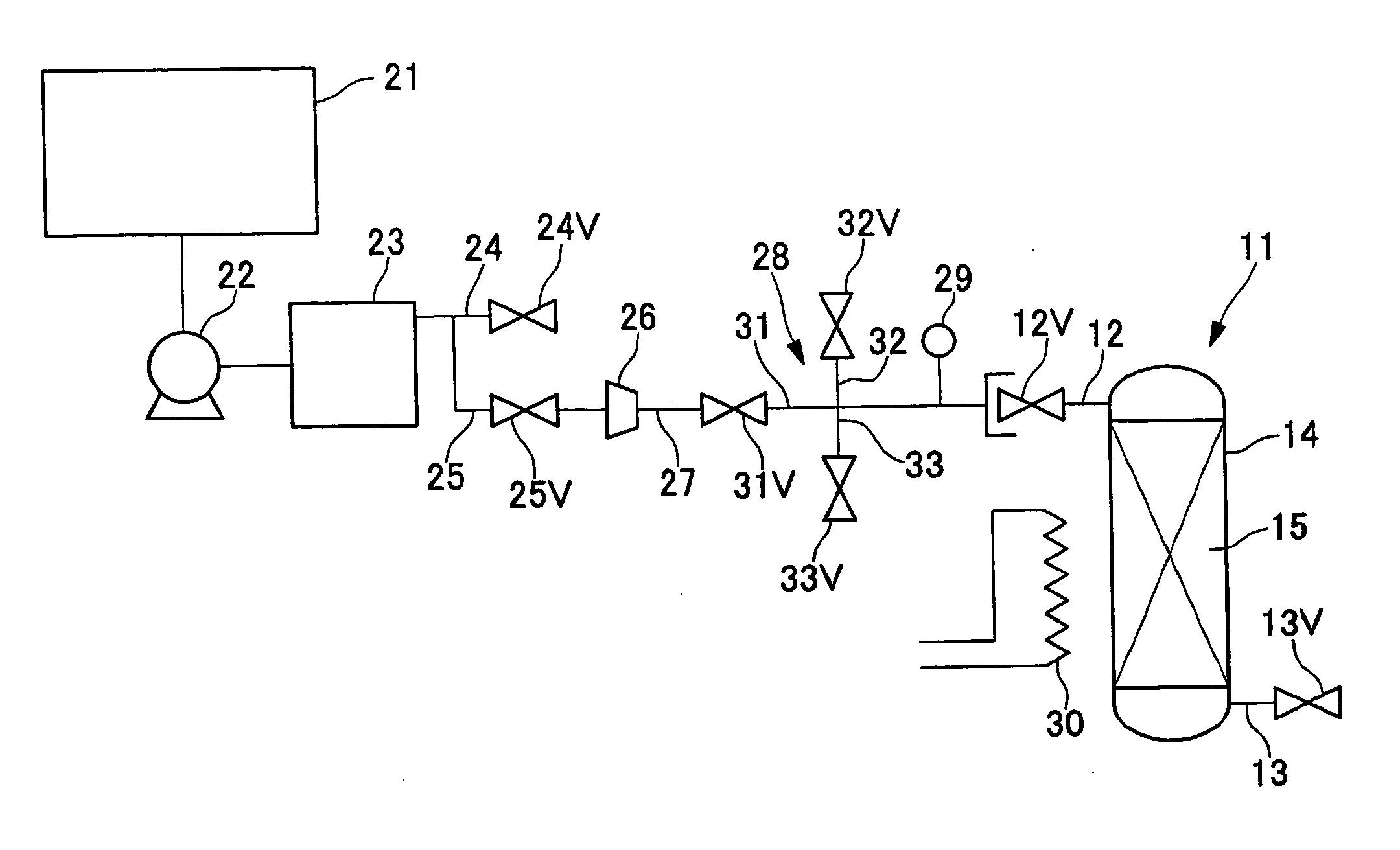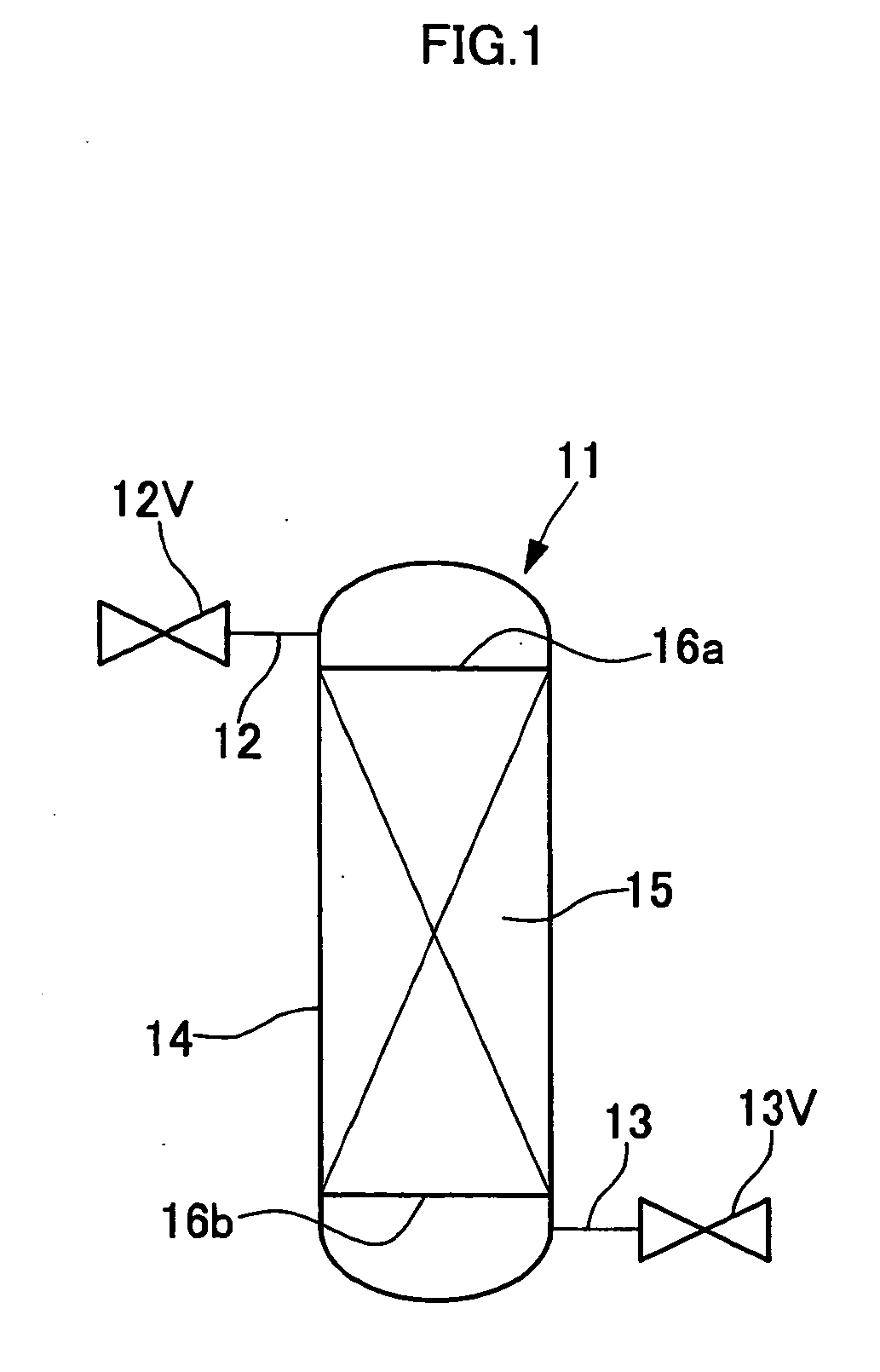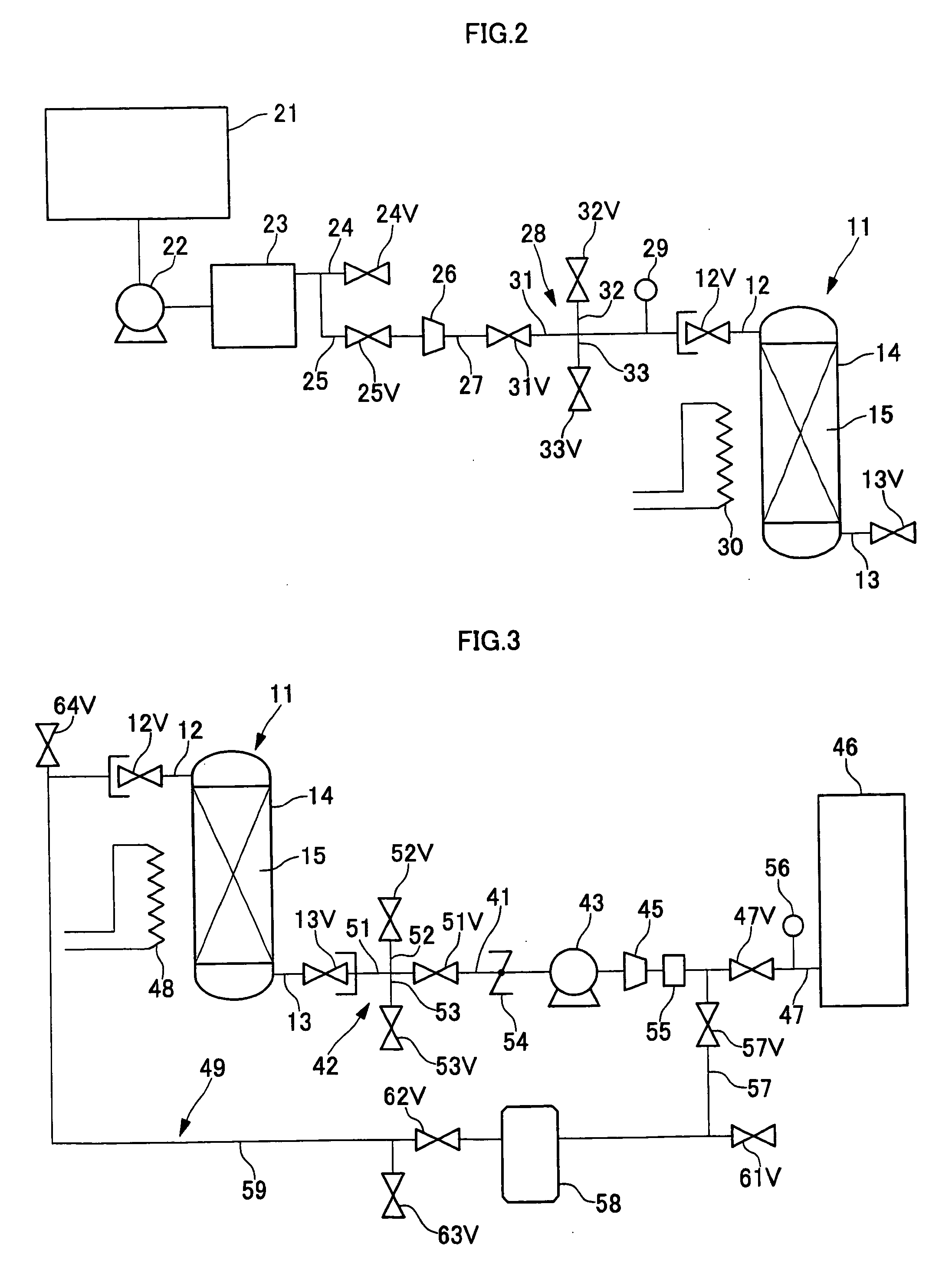Process for recovering rare gases using gas-recovering container
- Summary
- Abstract
- Description
- Claims
- Application Information
AI Technical Summary
Benefits of technology
Problems solved by technology
Method used
Image
Examples
example 1
[0092] As shown in FIG. 1, the adsorption amount of xenon was measured using a gas-recovering container 11, which comprises an 8 L internal volume air-tight container 14 containing 4.0 Kg of activated carbon 15 therein. At first, in order to purge atmospheric components in the gas-recovering container 11, argon was introduced at a rate of 1 L / minute from one joint section 12 and simultaneously pumping was carried out from the other joint section 13 while heating at 300° C. by winding a heater on the circumference of the gas-recovering container 11. This condition was continued for 12 hours and thereafter, the valve 12 was closed to stop the argon introduction, and pumping was carried out until the pressure in the gas-recovering container 11 reached 100 Pa. Then, heating of the gas-recovering container 11 was stopped and it was cooled to 25° C.
[0093] Into this gas-recovering container 11, a mixed gas of 50% of xenon and 50% of argon was introduced and the total introduction amount a...
example 2
[0094] To a gas recovery apparatus as shown in FIG. 2, the gas-recovering container 11 was connected and the rare gas recovery amount was measured. The gas-recovering container 11 used was comprised of a 47 L internal volume air-tight container 14 containing 20 Kg of activated carbon 15 filled therein. The gas-recovering container 11 was subjected to purge procedure in the same manner as in Example 1.
[0095] To an equipment using a rare gas 21, xenon was introduced at a flow rate of 1 L / minute to generate plasma and also pumping was carried out in a vacuum pumping apparatus 22. In this procedure, argon was introduced at a rate of 1 L / minute as a purge gas for the vacuum pumping apparatus 22 and argon was introduced at a rate of 0.5 L / minute as a purge gas for a harmful component removal means 23. Therefore, in a compressor 26, argon, pressurization was conducted using argon having a xenon proportion of 40% at a rate of 2.5 L / minute.
[0096] While the gas pressurized in the compressor...
example 3
[0098] To a gas discharge apparatus as shown in FIG. 3, the gas-recovering container 11, which recovered 1250 L of xenon in Example 2, was connected and the amount of xenon discharged was measured. As a vacuum pumping apparatus 43, which is gas discharge means, a vacuum pump having an pumping speed of 1000 m3 / hour at 100 Pa was used and as a compressor 45, one capable of outputting a gas at a rate of 40 L / minute when the pressure was increased from atmospheric pressure to 0.8 MPa was used. As a rare gas concentration measurement apparatus 55, a thermo-conductivity method was used.
[0099] While the gas-recovering container 11 was heated at 300° C., the gas was led out from the gas-recovering container 11, and the xenon concentration of this gas was measured. As a result, xenon was not detected for 10 minutes after the starting of discharging the gas and the xenon concentration was about 20% after the passage of 10 minutes. Thereafter, the xenon concentration was increased to the maxi...
PUM
 Login to View More
Login to View More Abstract
Description
Claims
Application Information
 Login to View More
Login to View More - R&D
- Intellectual Property
- Life Sciences
- Materials
- Tech Scout
- Unparalleled Data Quality
- Higher Quality Content
- 60% Fewer Hallucinations
Browse by: Latest US Patents, China's latest patents, Technical Efficacy Thesaurus, Application Domain, Technology Topic, Popular Technical Reports.
© 2025 PatSnap. All rights reserved.Legal|Privacy policy|Modern Slavery Act Transparency Statement|Sitemap|About US| Contact US: help@patsnap.com



